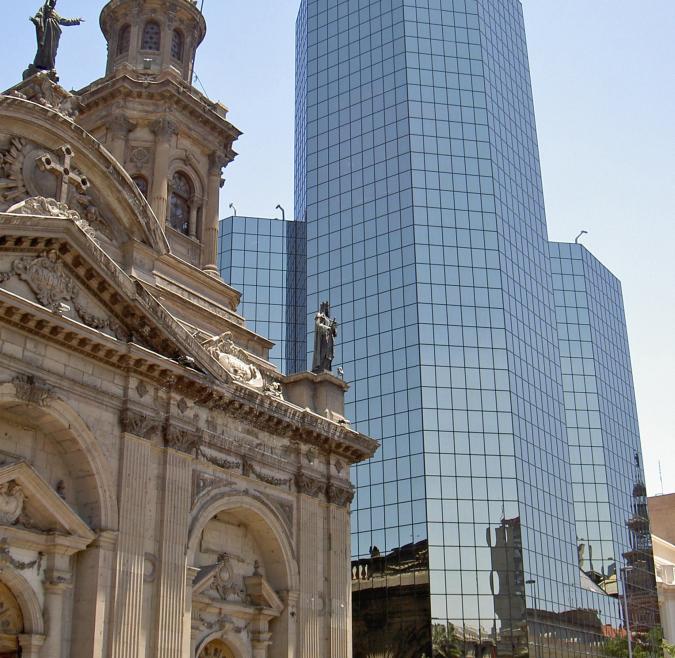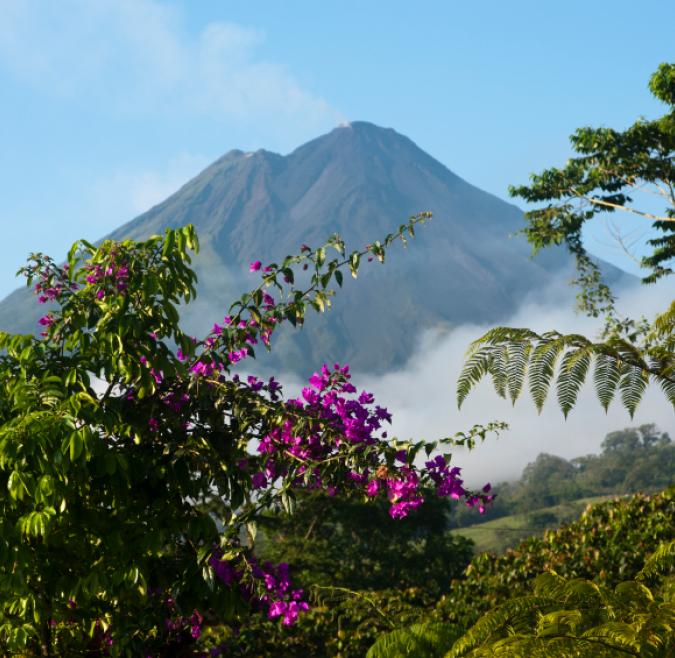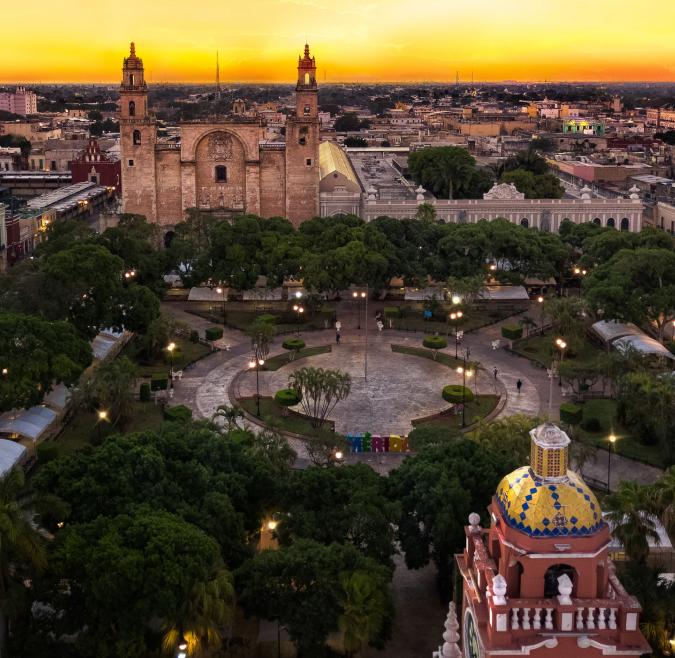Open Campus in the Americas (CIEE)
The Program
Don't miss the *Fully-Funded* CIEE opportunity
For Fall 2025 & Spring 2026!
Check out this Fully-Funded opportunity, here: CIEE Leading Change in Study Abroad !!!
Study in two or three different Latin American cities in one semester! The Open Campus program is designed to give you unmatched opportunities to study and embrace different customs, cultures, and languages. Students choose to study in 2 or 3 different cities (at any of CIEE’s Latin American Global Institutes), and take courses in 6 week blocks. Internships, service learning, and academic projects are also available for credit.
Program Locations

Argentina
Buenos Aires
There’s good reason this capital city, Buenos Aires, earned the nickname “Paris of South America.” Filled with European transplants, residents enjoy endless amounts of theater, music, art, and architecture. But Buenos Aires is also recognized around the globe as an important economic hub for businesses and as a progressive city.

Chile
Santiago
Santiago, seated at the base of the Andes Mountains and the edge of the Pacific coast, is perfectly situated not only for sunbathers and mountain climbers but for those seeking higher education in world-famous universities. Latin America’s finest universities reside in this stable and growing capital as do the country’s biggest businesses. Students relish the asados (barbecues), beautiful neoclassical architecture, and the vibrant and affordable urban environment.

Costa Rica
Monteverde
Located in northwestern Costa Rica, Monteverde lies along the continental divide at the crest of the Cordillera de Tilarán mountain chain, blanketed by a cool, wet cloud forest extending down into the Atlantic lowlands. The cloud forest provides a striking contrast to the deciduous forest on the Pacific side.The Monteverde Cloud Forest Reserve was founded in 1972 to protect the entire ridge top above Monteverde and down into the Peñas Blancas Valley. With its unique history and geography, Monteverde is a stunning home to exotic flora, fauna, and wildlife and sustainability projects including agriculture, energy production, water conservation, forest management, and biodiversity conservation.

Mexico
Yucatan
From hundreds of Mayan ruins and colonial architecture to exceptional food and a bustling city life, the Yucatán is a complex hub of ancient and modern culture. Mérida hosts one of the largest intact indigenous populations (60%) of any Latin American city. Mayan culture is part of daily life in the modern city – regional foods, music, textiles, and traditions are all rooted in centuries of tradition. As of 2019, Mérida is the second safest city in North America (after Quebec city) filled with wonderful people among its shops, restaurants, universities and museums. Much of the region sits within the Chicxulub crater, formed by a large asteroid that hit earth 66 million years ago, causing the fifth great extinction that included dinosaurs. The Yucatán’s karst topography of limestone creates caves and cenotes rich in beauty and cultural significance. Zoos, botanical garden, Museum of Natural History, and science institutes are all within easy reach!
Academics
In each location, courses are available in International Relations and Political Science, Business, Communications, Journalism and New Media, Global and Community Health, Language Studies, Literature and Culture, Environmental Studies (Science, Engineering, & Education), Sustainable Agriculture, Sciences (Natural, Earth, Life, Physical, Biology & Chemistry). Students must choose 2 or 3 locations, and 2 courses per location, for a total of 12-18 credits for the semester. Note, Internships, service learning and academic projects are available for credit.
Check out the classes for each location below:
Buenos Aires, Argentina
Santiago, Chile
Monteverde, Costa Rica
Yucatan, Mexico (ideal for studies in natural sciences including ecology, the environment, astronomy and cosmology and even physics!)
Sample Semester Options:
6 WEEKS IN 1 Location*, & 6 WEEKS IN 2nd Location* (*consider any 2 of the 4 locations above)
Block 1 – Two Courses, 6 Credits
Block 2 – Two Courses, 6 Credits
OR
6 WEEKS IN 1 Location*, 6 WEEKS IN 2nd Location* (*consider any 2 of the 4 locations above)
Block 2 – Two Courses, 6 Credits
Block 3 – Service Learning OR Independent Research & One Course, 6 Credits
OR
6 WEEKS IN 1 Location*, 6 WEEKS IN 2nd Location* , 6 WEEKS IN 2nd or 3rd Location (*consider any 3 of the 4 locations above)
Block 1 – Two Courses, 6 Credits
Block 2 – Two Courses, 6 Credits
Block 3 – Service Learning OR Independent Research & One Course, 6 Credits
Housing and Meals
In the heart of each city, you can choose among a variety of housing accommodations, such as international residence halls, apartments, or home stays. For more information about housing, please refer to the CIEE websites, below (for each location):
Financial Information
Program Costs
| NJ Resident | non-NJ Resident | |
|---|---|---|
| ATW Program Cost (2 blocks)* | $13,500 | $17,500 |
Program Cost includes:
• Tuition
• Housing
• Administrative Fees
• Emergency Medical Access Abroad
• *Access the World (ATW)
Out-of-Pocket Costs
| Meals | $2,000 |
| Airfare* | $1,000 |
| Local Transportation | $200 |
| Visa | $150 |
| Books and Classroom Materials | $150 |
| Personal Expenses | $1,200 |
| CIEE Deposit | $300 |
| Total | $5,000.00 |
Out-of-Pocket Cost includes:
*Flight Scholarships Guaranteed for Fall 2025 & Spring 2026 Up to $1500 as a part of our Year of Latin America & the Caribbean (YOLAC).
The above costs are estimations and represent the known out-of-pocket costs students encounter during their time abroad.
Some of these expenses will be paid for prior to going abroad, such as an airline ticket and visa costs, while some of these expenses, such as meals and local transportation, will be paid in-country as part of your daily expenses. As you plan, you will need to budget these costs and spend wisely throughout your time abroad.
Program Costs
| NJ Resident | non-NJ Resident | |
|---|---|---|
| ATW Program Cost (3 blocks)* | $13,500 | $17,500 |
Program Cost includes:
• Tuition
• Housing
• Administrative Fees
• Emergency Medical Access Abroad
• *Access the World (ATW)
Out-of-Pocket Costs
| Meals | $2,300 |
| Airfare* | $1,500 |
| Local Transportation | $400 |
| Visa | $300 |
| Books and Classroom Materials | $150 |
| Personal Expenses | $1,500 |
| CIEE Deposit | $300 |
| Total | $6,450.00 |
Out-of-Pocket Cost includes:
*Flight Scholarships Guaranteed for Fall 2025 & Spring 2026 Up to $1500 as a part of our Year of Latin America & the Caribbean (YOLAC).
The above costs are estimations and represent the known out-of-pocket costs students encounter during their time abroad.
Some of these expenses will be paid for prior to going abroad, such as an airline ticket and visa costs, while some of these expenses, such as meals and local transportation, will be paid in-country as part of your daily expenses. As you plan, you will need to budget these costs and spend wisely throughout your time abroad.
Program Costs
| NJ Resident | non-NJ Resident | |
|---|---|---|
| ATW Program Cost (2 blocks)* | $13,500 | $17,500 |
Program Cost includes:
• Tuition
• Housing
• Administrative Fees
• Emergency Medical Access Abroad
• *Access the World (ATW)
Out-of-Pocket Costs
| Meals | $2,000 |
| Airfare* | $1,000 |
| Local Transportation | $200 |
| Visa | $150 |
| Books and Classroom Materials | $150 |
| Personal Expenses | $1,200 |
| CIEE Deposit | $300 |
| Total | $5,000.00 |
Out-of-Pocket Cost includes:
*Flight Scholarships Guaranteed for Fall 2025 & Spring 2026 Up to $1500 as a part of our Year of Latin America & the Caribbean (YOLAC).
The above costs are estimations and represent the known out-of-pocket costs students encounter during their time abroad.
Some of these expenses will be paid for prior to going abroad, such as an airline ticket and visa costs, while some of these expenses, such as meals and local transportation, will be paid in-country as part of your daily expenses. As you plan, you will need to budget these costs and spend wisely throughout your time abroad.
Program Costs
| NJ Resident | non-NJ Resident | |
|---|---|---|
| ATW Program Cost (2 blocks)* | $13,500 | $17,500 |
Program Cost includes:
• Tuition
• Housing
• Administrative Fees
• Emergency Medical Access Abroad
• *Access the World (ATW)
Out-of-Pocket Costs
| Meals | $2,300 |
| Airfare* | $1,500 |
| Local Transportation | $400 |
| Visa | $300 |
| Books and Classroom Materials | $150 |
| Personal Expenses | $1,500 |
| CIEE Deposit | $300 |
| Total | $6,450.00 |
Out-of-Pocket Cost includes:
*Flight Scholarships Guaranteed for Fall 2025 & Spring 2026 Up to $1500 as a part of our Year of Latin America & the Caribbean (YOLAC).
The above costs are estimations and represent the known out-of-pocket costs students encounter during their time abroad.
Some of these expenses will be paid for prior to going abroad, such as an airline ticket and visa costs, while some of these expenses, such as meals and local transportation, will be paid in-country as part of your daily expenses. As you plan, you will need to budget these costs and spend wisely throughout your time abroad.
